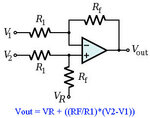haseeb123
Newbie level 6

Hello
I have a problem with my circuit as enclosed. R1 (25 W / 15 Ohms) is heating up too much. I intend to get back indication that
my lamps 1 and 2 have failed. Where it says (LP_Fail To PIC), thats the pin that is pulled HIGH when the optocoupler shuts off in the
event of a lamp failure. I'm using 24VDC. The problem is not programming nor the PIC, but is infact optocoupler back indication
that I want and it seems that there is a flaw in the circuit. R1 over heats too much too quickly. My lamps each draw 1amp current @
24VDC. If I by pass the optocoupler and R1 and connect the 24VDC directly, then i have no issues and the lamps work great with no
over heat issues. I have tried high/low values of R1 and with higher watts as well but the heating up of R1 is far to great and u can smell it burning! Please can someone suggest a fix to the over heating problem or suggest another slicker way of back indication to the
PIC in the event of my lamp failures.
Haseeb
I have a problem with my circuit as enclosed. R1 (25 W / 15 Ohms) is heating up too much. I intend to get back indication that
my lamps 1 and 2 have failed. Where it says (LP_Fail To PIC), thats the pin that is pulled HIGH when the optocoupler shuts off in the
event of a lamp failure. I'm using 24VDC. The problem is not programming nor the PIC, but is infact optocoupler back indication
that I want and it seems that there is a flaw in the circuit. R1 over heats too much too quickly. My lamps each draw 1amp current @
24VDC. If I by pass the optocoupler and R1 and connect the 24VDC directly, then i have no issues and the lamps work great with no
over heat issues. I have tried high/low values of R1 and with higher watts as well but the heating up of R1 is far to great and u can smell it burning! Please can someone suggest a fix to the over heating problem or suggest another slicker way of back indication to the
PIC in the event of my lamp failures.
Haseeb






